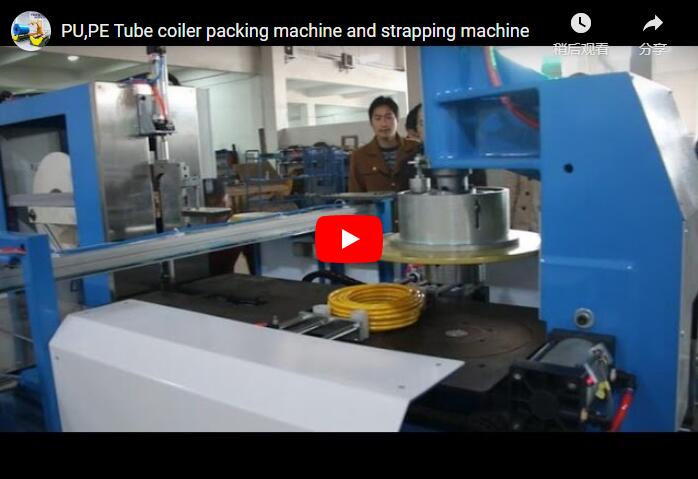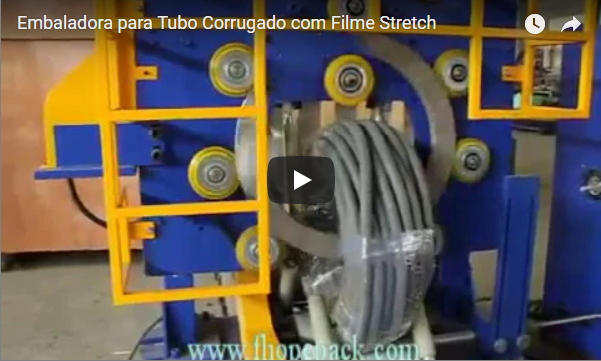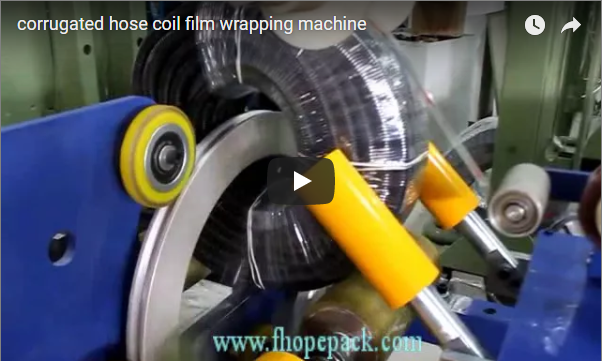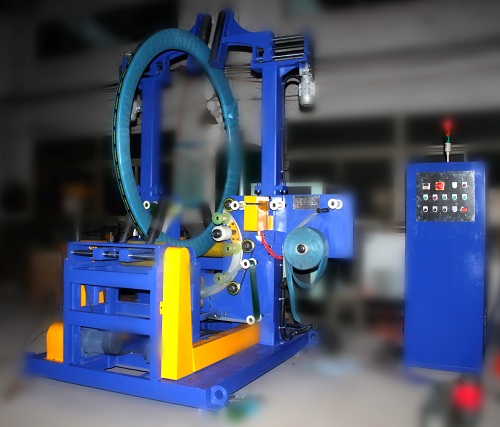Enhancing Coil Packaging Efficiency: Automated Solutions in Manufacturing
The efficient and secure packaging of coils – whether steel, aluminum, wire, cable, or hose – is a critical final step in numerous manufacturing processes. Traditional manual packing methods often present challenges related to consistency, speed, labor intensity, and potential product damage. Modern industrial demands necessitate automated solutions, such as the coil packing machine demonstrated above, to optimize throughput, ensure package integrity, and reduce operational costs. Drawing insights from industry best practices and technological advancements documented in resources like Stahl und Eisen and various packaging technology patents (e.g., related to orbital wrapping mechanisms), automated systems offer significant advantages.
The Limitations of Manual Coil Handling and Packaging
Manual wrapping and handling of heavy or bulky coils can lead to several operational inefficiencies and risks:
- Inconsistent Wrapping: Manual application of stretch film or other wrapping materials often results in uneven tension and coverage, potentially compromising product protection during transit and storage.
- Low Throughput: The speed of manual packing is limited by human capability, creating bottlenecks in high-volume production environments.
- Labor Costs and Ergonomics: Manual packing is labor-intensive and can pose ergonomic risks to workers handling heavy materials and performing repetitive motions.
- Material Wastage: Inconsistent application typically leads to higher consumption of packaging materials compared to precisely controlled automated systems.
Automated Coil Packing Technology: Operational Principles
Automated coil packing machines, particularly orbital stretch wrappers as often seen in metal processing and cable industries, streamline the packaging process. The core operation typically involves:
- Coil Loading: Coils are fed onto the machine's conveyor system, often integrated with upstream production lines or coil tilting devices.
- Positioning: Sensors detect the coil's presence and position it correctly within the wrapping ring.
- Wrapping Cycle: A wrapping ring, carrying a roll of packaging material (e.g., stretch film, VCI paper, HDPE), rotates orbitally through the eye of the coil while the coil itself may remain stationary or rotate slowly depending on the desired wrap pattern.
- Film Application: Advanced systems feature powered pre-stretch carriages (as discussed in packaging research journals) that elongate the film before application. This maximizes film yield (often achieving 200-300% stretch) and ensures tight, secure wrapping with consistent tension.
- Cutting and Sealing: Upon cycle completion, the material is automatically cut and secured to the package.
- Coil Unloading: The fully wrapped coil is conveyed out of the machine, ready for storage or shipment.
Key Technical Features and Parameters
Modern automated coil packing systems often incorporate the following features, reflecting advancements highlighted in technical papers and patent literature (e.g., USPTO Class B65B):
- Control System: PLC (Programmable Logic Controller) with HMI (Human-Machine Interface) for parameter setting, diagnostics, and operation monitoring.
- Variable Speed Drives: For precise control over ring rotation and conveyor speeds.
- Powered Pre-Stretch: Ensures optimal film utilization and load containment (key metric: percentage of stretch).
- Material Compatibility: Designed for various materials like LLDPE stretch film, VCI (Volatile Corrosion Inhibitor) film/paper for metal coils, and woven materials.
- Automatic Film Cutting & Clamping: Enhances automation level and cycle speed.
- Safety Features: Light curtains, safety interlocks, and emergency stops compliant with industry standards (e.g., ISO 13849).
Typical Specification Ranges:
- Coil Outside Diameter (OD): 500 mm - 2500 mm (Varies by machine model)
- Coil Inside Diameter (ID): 300 mm - 1500 mm
- Coil Width: 100 mm - 1000 mm
- Coil Weight: Up to 5000 kg or more
- Wrapping Efficiency: 20 - 60 coils/hour (Dependent on coil size and wrap cycles)
Quantifiable Benefits of Automated Coil Packing
Implementing automated coil packing systems yields significant, measurable advantages, aligning with lean manufacturing principles often discussed in publications like MM MaschinenMarkt:
- Increased Throughput: Automated cycles are significantly faster and more consistent than manual methods.
- Reduced Material Costs: Pre-stretch systems can reduce film consumption by 50-75% compared to manual wrapping.
- Improved Package Quality: Consistent tension and overlap ensure superior load stability and protection against dust, moisture, and physical damage. VCI integration provides crucial corrosion protection for metal coils.
- Enhanced Safety: Eliminates manual handling risks associated with heavy coils and repetitive wrapping motions.
- Labor Optimization: Frees up personnel for higher-value tasks, addressing labor shortages and reducing direct labor costs per package.
- Process Integration: Easily integrates into automated production and logistics workflows, enabling seamless data exchange with MES or ERP systems, a trend highlighted in Industry 4.0 discussions.
Conclusion
Automated coil packing machines represent a strategic investment for industries handling coiled products. By leveraging established engineering principles and incorporating advancements in materials science and control systems – topics frequently covered in technical journals and patent databases – these machines deliver enhanced efficiency, superior product protection, improved workplace safety, and significant cost savings. They are indispensable tools for maintaining competitiveness in today's demanding manufacturing landscape.
For further details on specific coil packaging solutions:
https://www.fhopepack.com/Coil_packing_machine.html






